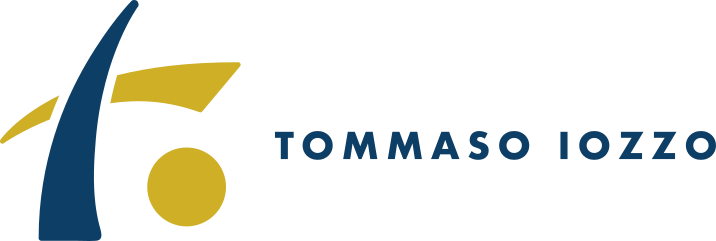CLINICAL AREA
WORK AREAS
- Anxiety
- Panic attack
- Depression
- Mood disorder
- Phobias
- Addiction
- Eating disorder
- Traumatic events
- Stress
- Relationship difficulties
- ADHD
ORIENTATION
I’m a licensed psichologist, member of the Piedmont board of psychologists since 2017.
I’m a major in cognitive psichotherapy at Centro Clinico Crocetta directed by Prof. Fabio Veglia.
This type of approch allows to develop a treatment model based on strong scientific evidence, supported by thousands of empirical research (Evident-Based Medicine), which currently uses third-wave techniques, such as mindfulness, EMDR, and applications of Polyvagal Theory (S. Porges, 2014) to modify emotions, thoughts, traumas, maladaptive behaviors that generate suffering.
My approach to do therapy draws on cognitive psychotherapy, psychoneurophysiology techniques and the most recent discoveries in clinical neuroscience. Through biofeedback and neurofeedback, I’m able to trace a psychophysiological profile of the patient that allows me to train his autonomous and central nervous system.
University education and personal experiences took me to integrate my job with the mindfulness for stress management and to achieve greater awareness.
I’m an EMDR certified therapist (Level 2), recognised by Europe EMDR Association and I have been a member of italian EMDR Association for 3 years and I use this protocol in the treatment of simple and complex traumatic events.
Recently I integrated my work using advanced tools, such as therapy through virtual reality in the treatment of phobias and for physical and cognitive rehabilitation.
I am enabled to use the safe and sound protocol and the ILS focus protocol, which are based on the Polyvagal theory of dr. Stephen Porges and which are provided for stress reduction and hypersensitivity to sounds, to promote social involvement and resilience.

METHOD
- Cognitive psychotherapy. The cognitive psychotherapy is currently one of the most widespear and effective therapy in the world, supported from the scientific point of vew, by many international empirical researches (Evident-Based Medicine). Born in ’60s thank to Aaron Beck e Albert Ellis, after the behaviorist and cognitivist wave, today the cognitive psychology achieves the so-called “Third-wave” and embraces new neuroscientific and psychophysiological techniques that allow to modify thoughts (cognitive pattern), emotions, behaviors, traumas and physiological dysregulations that generate suffering in the patient.
In my working method, I use EMDR, the mindfulness and other therapeutical applications of Stephen Porges’ polyvagal theory (2014), as well as psychophysiological surveys through biofeedback and neurofeedback.
- EMDR therapy. EMDR is a structured psychotherapeutic method that facilities the treatments of different psychopathologies and problems connected to traumatic events or more common experiences but anyway emotionally stressful. I’m an EMDR certified therapist (Level 2), recognised by Europe EMDR Association and I have been a member of the italian EMDR Association for 3 years.
- Biofeedback. The biofeedback is a psyco-physiological psychotherapeutic technique. Biological parameters inherent to the sympathetic and parasympathetic nervous system (heart rate, muscle tension, breathing, skin conductance, brain waves), can be measured in non-invasively way through a device and some sensors, then the patient learns how to monitor and voluntary control of unconscious biological processes.
I studied at BFE association (Biofeedback Europe), through a purely theoretical basic and advanced course, then I attended the technical-practical training course to take exam for Third level european BFE certification.
- Neurofeedback: the neurofeedback is a method that uses biofeedback principles to trace a central nervous system profile of patient, through electroencephalogram (EFG), it used to work on the control of cerebral waves. It’s a technique that I use in many types of disorder, such as the treatments of anxiety and depression.
- Safe and Sound Protocol: the SSP is an intervention lastin 5 days that allow to reach important improvements in the following areas: anxiety and post-traumatic symptoms, social and relationship difficulties, inattention and behavioural deregulation, auditive hypersensitivity. This intervention is based on research conducted for more then twenty years by Prof. Stephen Porges, Distinguished University Scientist at Kinsey Institute and Professor at Psychiatry Department of University of North Carolina. The treatment consists in listening to music specifically developed to retune again the nervous system and thus restore a psychophysiological balance.
- ILS focus: the “focus” method is a non-invasive clinical intervention that allows to implement brain functions and to improve the mind-body system through multisensory input: listening to specially processed sounds and physical activity. It is indicated for the treatment of ADHD, autistic spectrum, physical and language rehabilitation therapies.
- VR Therapy: I use this therapy based on virtual reality for the treatment of phobies and anxety.
Many studies demonstrate the effectiveness of gradual exposure to phobic stimuli through virtual reality.
SERVICES
- Individual psichotherapy for children, teenagers and adults: the individual psychotherapy is a treatment path that provides for a one-to-one relationship between the therapist and the patient.
The objectives of this type of therapy are manifold: a therapy can be undertaken if a psychophysical suffering hinders the daily life or if a situation, thoughts, emotions suddenly burst into life threatening the psychological balance. It can also provide tools to manage syntoms, to reduce stress and to improve life quality of patient.
The therapy is also useful for those who want to do a personal growth in-depth, to get to know themselves better and transform their way of being into something more functional.
- Couple psychotherapy. During couple psychotherapy, the therapist assists the couple and takes care of both partners, rather than the two individuals separately. The goals of this therapy are: help the couple to become aware of their relationship with respect to their own relationship models, to resolve and/or mediate conflicts and to communicate more effectively.
- Safe and Sound Protocol. The SSP is an intervention lastin 5 days that allow to reach important improvements in the following areas: anxiety and post-traumatic symptoms, social and relationship difficulties, inattention and behavioural deregulation, auditive hypersensitivity. This intervention is based on research conducted for more then twenty years by Prof. Stephen Porges, Distinguished University Scientist at Kinsey Institute and Professor at Psychiatry Department of University of North Carolina. The treatment consists in listening to music specifically developed to retune the nervous system (regulation status) and thus restore a psychophysiological balance. It can’t replace the individual therapy.
- ILS focus. The “focus” method is a non-invasive clinical intervention that allows to implement brain functions and to improve the mind-body system through multisensory inputs: listening to specially processed sounds and physical activity. It is indicated for the treatment of ADHD, autistic spectrum, physical and language rehabilitation therapies. It can’t replace the individual therapy.
- EMDR Therapy. The EMDR therapy (Eye Movement Desensitization and reprocessing) is a structured psychotherapeutic method that facilitates the treatment of various psychopathologies and disorders linked both to traumatic events and to more common but emotionally stressful experiences. The theoretical base of reference is the AIP (Adaptive Information Processing) model which addresses the unprocessed memories that can give rise to psychophysical sufferings. More than 44 randomized studies and hundreds of publications highlight the effectiveness of EMDR treatment with regards to:
- Anxiety
- Depression
- Phobies
- Acute mourning
- Addictions
- Biofeedback/Neurofeedback therapy: This therapy involves the treatment of a specific disorder exclusively through the measurement and monitoring of physiological parameters and specific training with biofeedback. During the assessment phase, the number of sessions that will be necessary depending on the disorder are agreed. Individual therapy cannot be replace by this type of treatment, but only applies to certain type of pathologies and clinical conditions. In the last 20 years, many evident-based researches have highlighted the key role and demonstrated the efficacy of biofeedback therapy for the following disorders (Yucha,C. and Montgomery,D. 2008. Evident-based practice in Biofeedback and Neurofeedback):
- Tension-type headache in adults
- Headaches in pediatric age
- Migraine
- Depressive disorders
- Anxiety
- Post traumatic stress disorder
- Repeated stress injury
- Cronic pain
- Hypertension
- Raynaud syndrome

